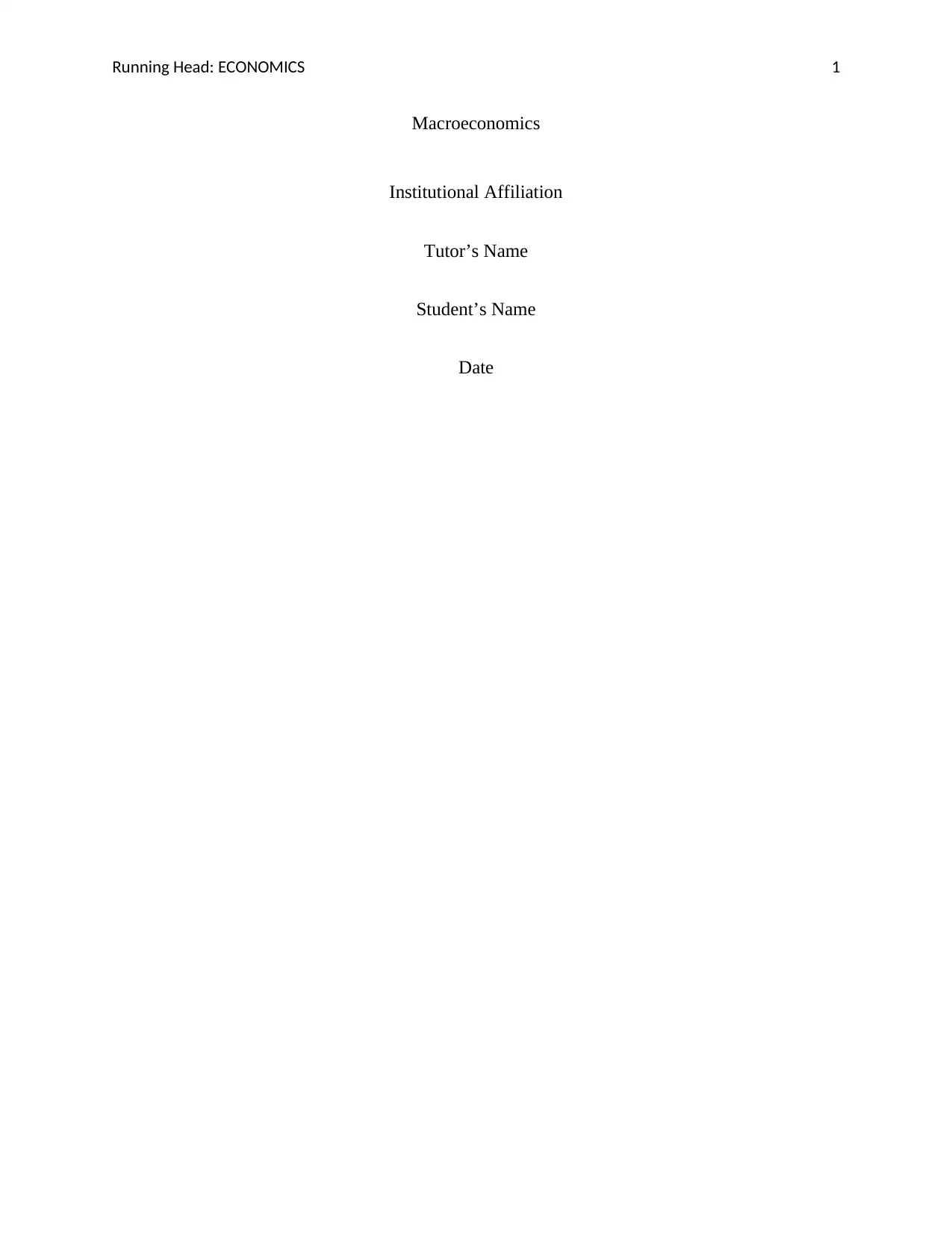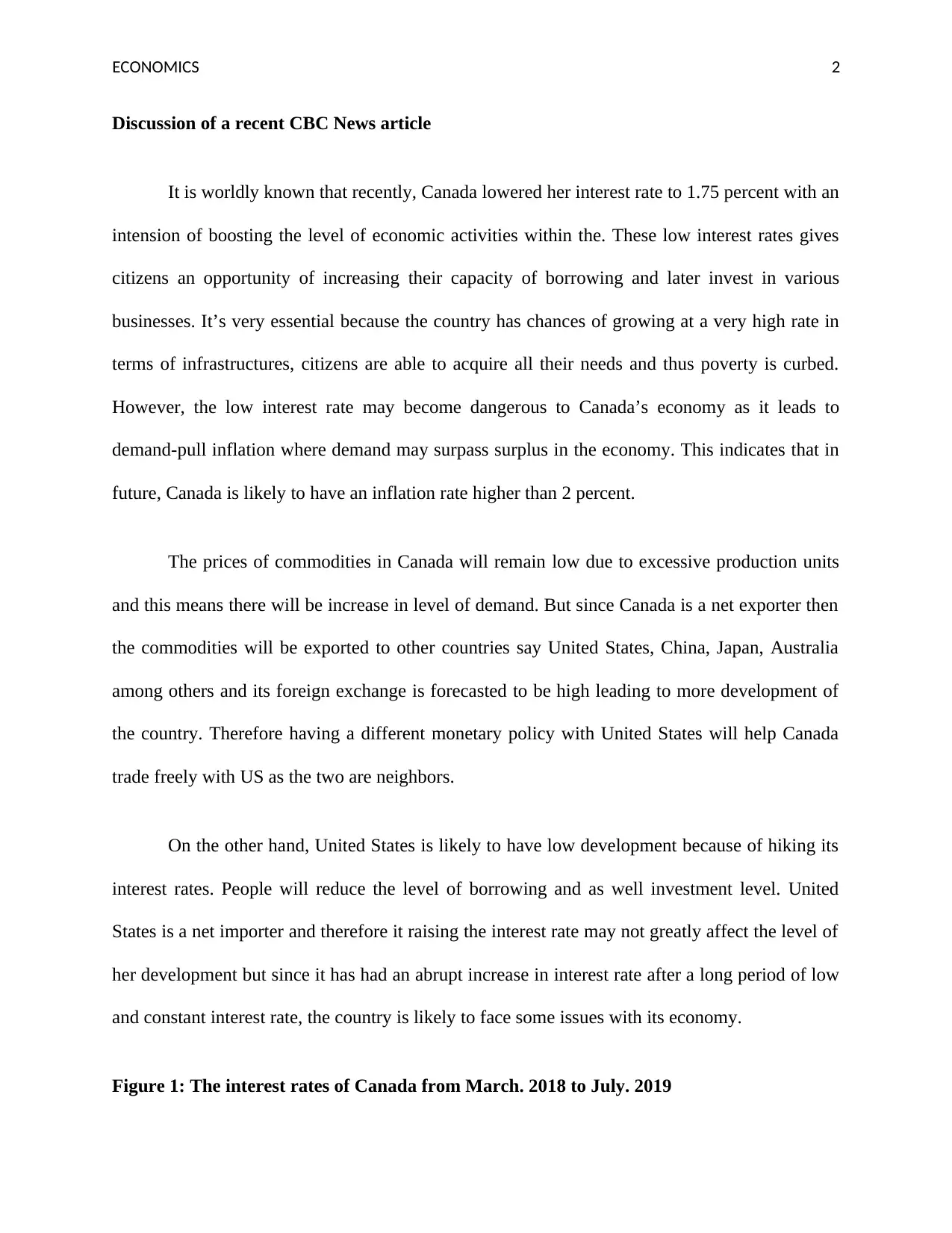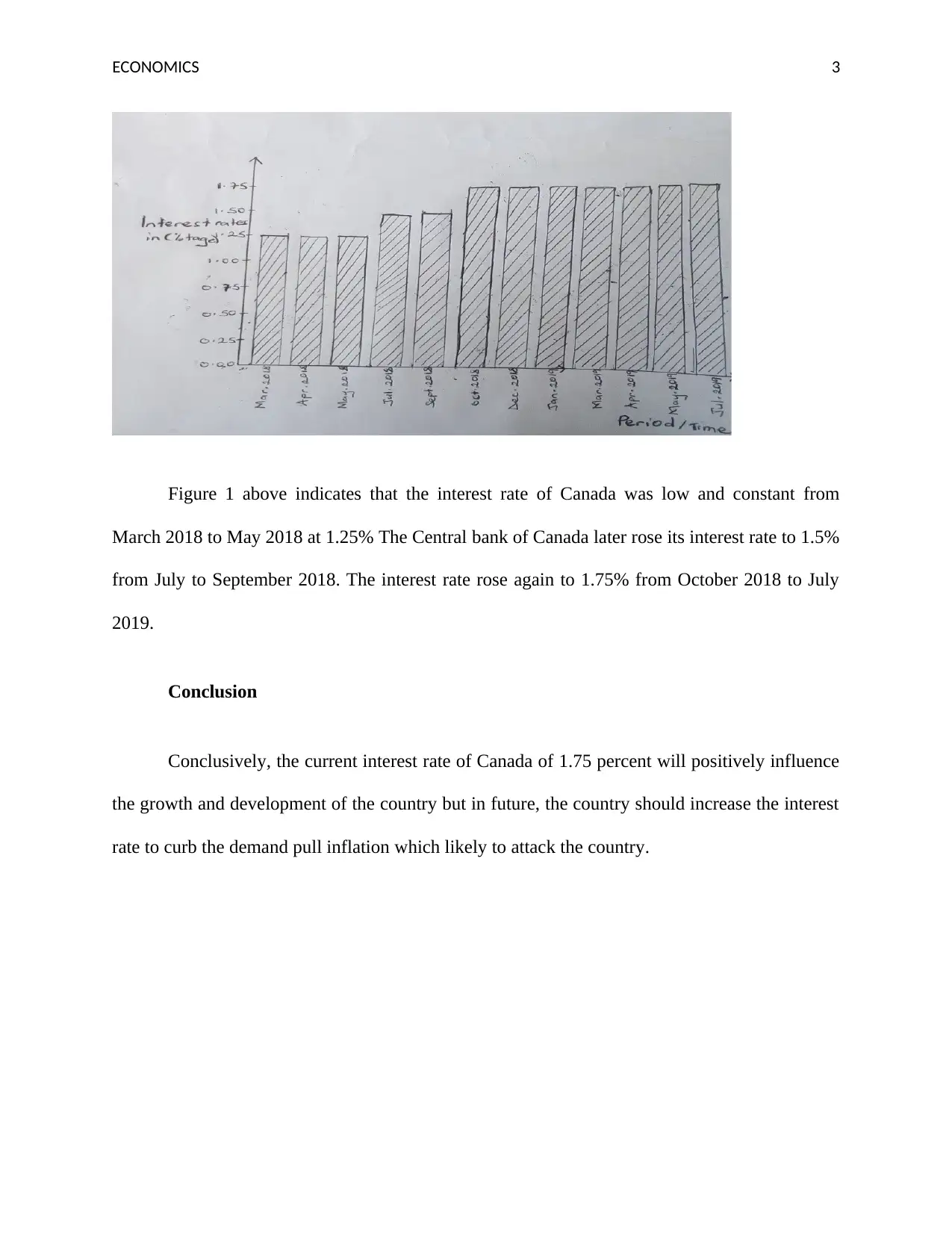Economics 3 Essay: Analysis of CBC News Article on Interest Rates
VerifiedAdded on 2022/09/18
|4
|459
|34
Essay
AI Summary
This economics essay analyzes a CBC News article discussing Canada's decision to lower its interest rate to 1.75% and its divergence from the US monetary policy. The essay explores the potential impacts of this decision, including the stimulation of economic activities through increased borrowing and investment, and the risk of demand-pull inflation. It examines the effects on the Canadian dollar (loonie), international trade, and the country's overall economic development. The essay includes an analysis of the interest rate trends from March 2018 to July 2019, and concludes with a discussion on the future implications of the current monetary policy, suggesting a need to increase the interest rate to curb potential inflation. The essay also considers the effects of the different monetary policies of Canada and the United States.
1 out of 4











![[object Object]](/_next/static/media/star-bottom.7253800d.svg)